Precision agriculture requires high-quality positioning equipment on our aircraft. This article explores the differences and advantages of different positioning systems.
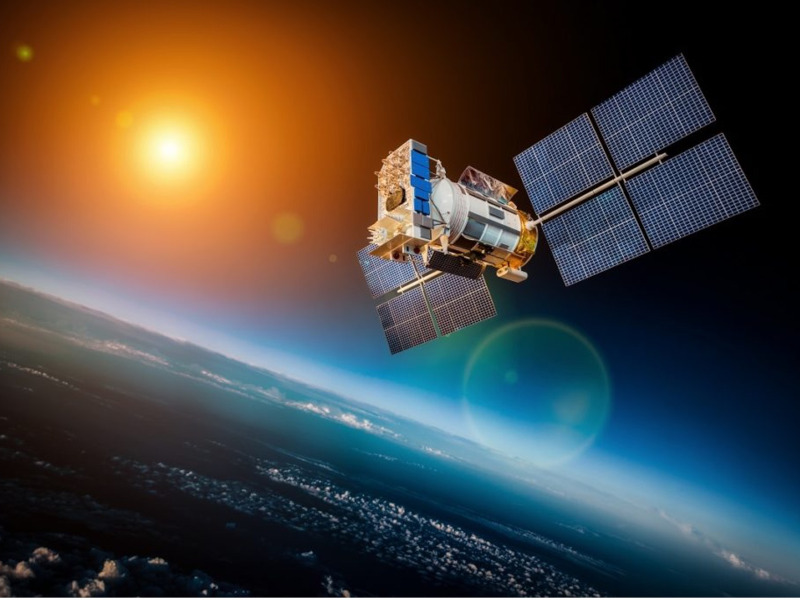
RTK
GNSS for RTK Base Stations refers to the use of Global Navigation Satellite System (GNSS) technology in Real-Time Kinematic (RTK) positioning to achieve high-precision location accuracy.
What is GNSS?
GNSS is an umbrella term for satellite systems that provide global positioning data. Key systems include:
- GPS – United States of America
- GLONASS – European Union
- BeiDou – China
- QZSS – Japan
- NavIC – India
Note: QZSS and NavIC are localised constellation, only providing service to their respective regions. BeiDou is a global but also provides an enhanced service to China.

GNSS satellites transmit signals that GNSS receivers use to determine their position on Earth. By accessing signals from multiple satellite constellations, users achieve better coverage, reliability, and precision.
RTK Base Stations and GNSS
An RTK base station is a GNSS receiver installed at a known, fixed location. Its role is to calculate the difference between its surveyed position and the position determined by GNSS signals, which may contain errors. These errors are due to factors such as:
- Ionospheric and tropospheric interference
- Satellite clock inaccuracies
- Orbital errors (ephemeris errors)
- Multi-path effects (signal reflection)
The RTK base station generates correctional data to counteract these errors and broadcasts the corrections to RTK-enabled devices (like drones or tractors) via radio, cellular, or other communication channels.
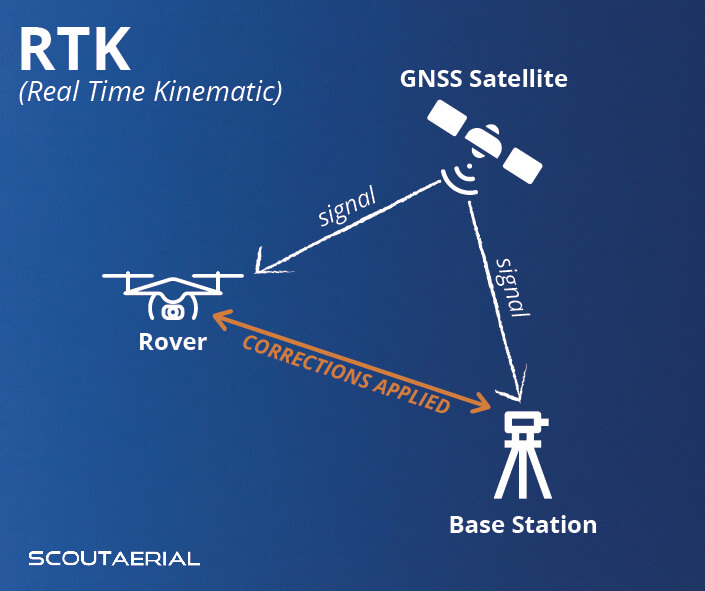
How GNSS works for Base Stations
Signal Reception: The RTK base station receives raw satellite signals from multiple GNSS constellations.
Error Calculation: The base station compares the raw GNSS data with its precisely surveyed location to calculate positioning errors.
Correction Data Transmission: The calculated corrections are sent to mobile GNSS receivers (rovers) in real-time.
High-Precision Positioning: The rover device (e.g., drone or agricultural equipment) uses both the raw satellite signals and correction data to determine its position with centimetre-level accuracy.
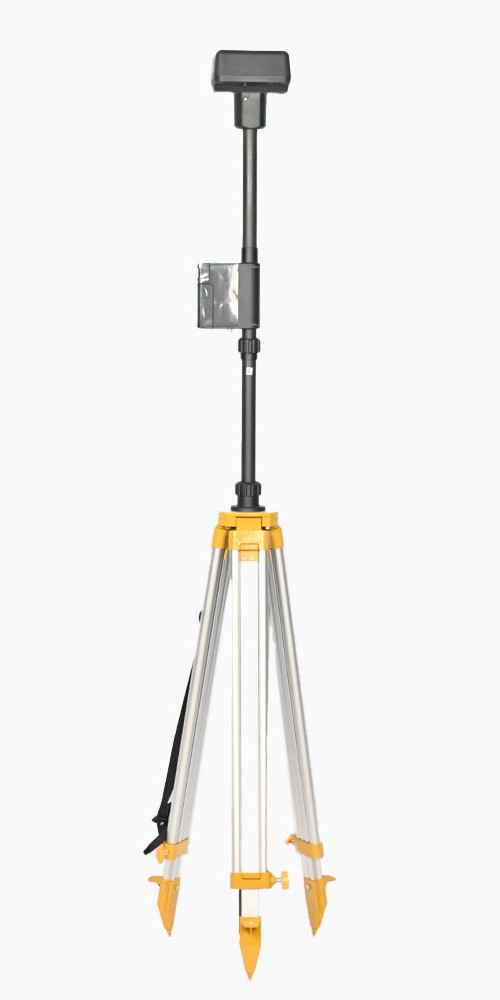
Applications of GNSS in RTK Base Stations
- Precision Agriculture: Enables accurate planting, spraying, and harvesting operations.
- Land Surveying: Provides high-precision measurements for mapping and construction.
- Drone Navigation: Ensures precise flight paths for aerial mapping, spraying, and inspection tasks.
- Autonomous Vehicles: Supports reliable and accurate positioning for self-driving cars and machinery.
- Marine and Construction: Facilitates accurate positioning for dredging, piling, and other tasks.
Advantages of GNSS in RTK Base Stations
- High Accuracy: Centimetre-level precision, essential for critical applications.
- Real-Time Corrections: Instantaneous adjustments to GNSS errors.
- Wide Compatibility: Supports multiple GNSS constellations for robust positioning.
- Independence: Operates independently of third-party networks, enhancing reliability in remote areas.
Limitations
- Limited Range: Correction signals are effective within 10-30 km of the base station.
- Setup Cost: Requires investment in base station hardware and setup.
- Mobility: Moving a base station requires re-surveying and setup.
RTK base stations utilising GNSS technology are a cornerstone of modern high-precision applications, offering unparalleled accuracy for industries that demand precise navigation and positioning.
CORS
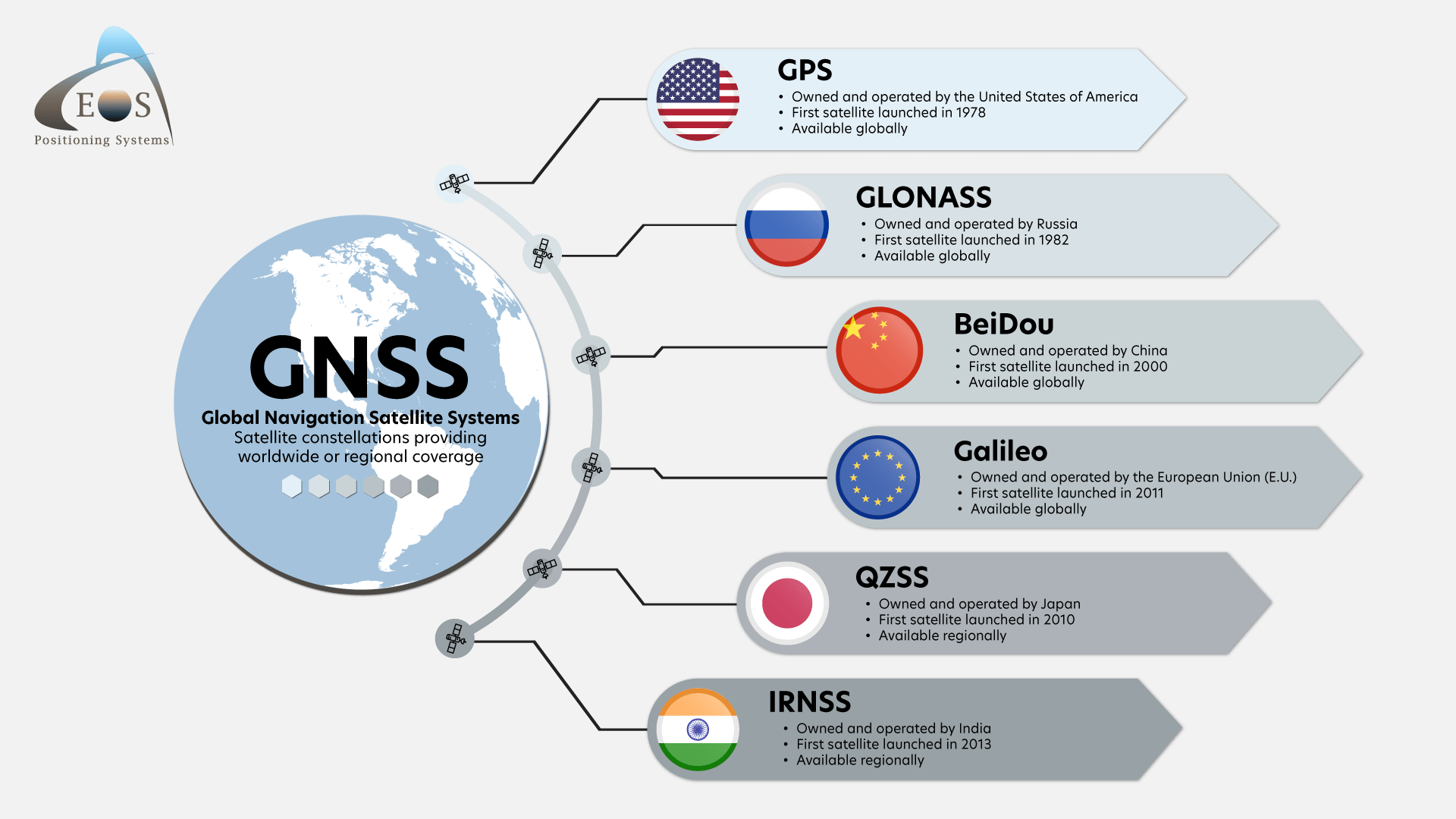
NOTE: IRNSS is also known as NavIC as mentioned earlier in this article.
CORS stands for Continuously Operating Reference Station. It is a network of permanently installed GNSS (Global Navigation Satellite System) receivers that provide highly accurate positional data. CORS networks are used to enhance the accuracy of GNSS positioning through real-time or post-processed corrections.
How CORS works
Station Setup:
Each CORS station consists of a GNSS receiver and antenna installed at a fixed, precisely surveyed location. These stations continuously receive satellite signals from constellations such as GPS, GLONASS, Galileo, and BeiDou.
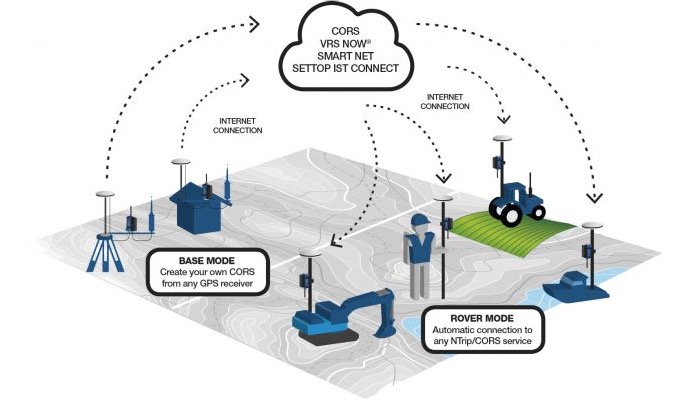
Error Detection:
The fixed location of each station allows it to calculate the errors in the satellite signals caused by factors like:
- Ionospheric and tropospheric interference
- Satellite orbit inaccuracies
- Clock errors
The deviations between the expected and actual signals are determined.
Correction Generation:
The detected errors are processed and used to generate correction data for nearby GNSS users.
Broadcasting Corrections:
Corrections are distributed to users via the internet or other communication systems. This enables real-time or post-processed adjustments for higher accuracy.
Application of CORS
- Surveying and Mapping: Provides centimetre-level accuracy, critical for land surveying and infrastructure projects.
- Agriculture: Facilitates precision farming by enabling accurate seeding, fertilising, and spraying.
- Construction: Ensures accurate site layouts and machine guidance.
- Navigation and Autonomous Vehicles: Improves positioning for autonomous drones, cars, and ships.
- Scientific Research: Supports geodetic studies, earthquake monitoring, and atmospheric research.
Advantages of CORS
- High Accuracy: Provides centimetre-level positioning corrections.
- Wide Coverage: A single CORS station can cover areas within a radius of 50-100 km, and networks provide nationwide or regional coverage.
- Real-Time Accessibility: Users can receive corrections instantly via cellular or internet connections.
- Reliability: Permanently installed and maintained stations ensure consistent and reliable data.
Limitations of CORS
- Internet Dependence: Requires stable internet or cellular connectivity for real-time corrections.
- Subscription Costs: Access to some CORS networks involves recurring fees.
- Remote Coverage: Availability may be limited in extremely remote or underdeveloped areas.
CORS networks are foundational to applications requiring high-precision GNSS positioning, making them essential for modern industries and scientific endeavours.
NTRIP
NTRIP (Networked Transport of RTCM via Internet Protocol) is a protocol designed to transmit GNSS (Global Navigation Satellite System) correction data over the internet in real-time. It allows high-precision positioning for applications like UAVs, agriculture, surveying, and autonomous vehicles.
NTRIP works by delivering RTCM (Radio Technical Commission for Maritime Services) data from a central server to a receiver via an internet connection. The process typically involves:
- Caster: Central server hosting correction data.
- Client: Device receiving corrections (e.g., UAV).
- Source: GNSS base station providing correction data.
This system enhances positional accuracy by mitigating GNSS errors such as atmospheric delays or satellite clock issues.
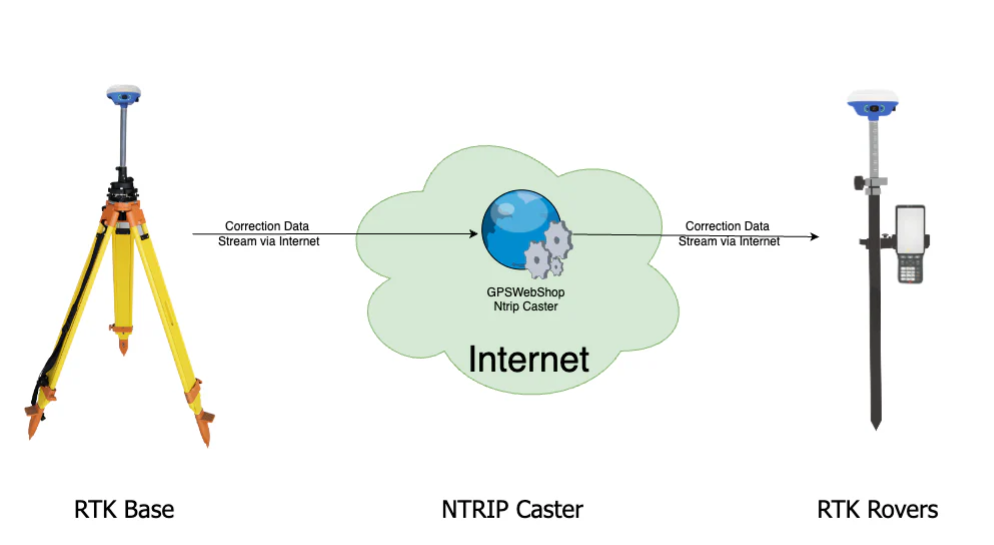
VRTK
VRTK (Virtual Real-Time Kinematic), as the term is sometimes used, may not provide true RTK-level centimetre accuracy. In this context, VRTK often refers to positioning solutions that approximate RTK-like functionality but do not fully achieve the precision of traditional RTK.
What is VRTK?
VRTK is often a marketing term or a less technical reference to solutions that provide enhanced GPS accuracy through cloud-based services, assisted GNSS, or correction networks. Unlike true RTK, which achieves centimetre-level accuracy, VRTK may deliver only sub-meter or meter-level accuracy.
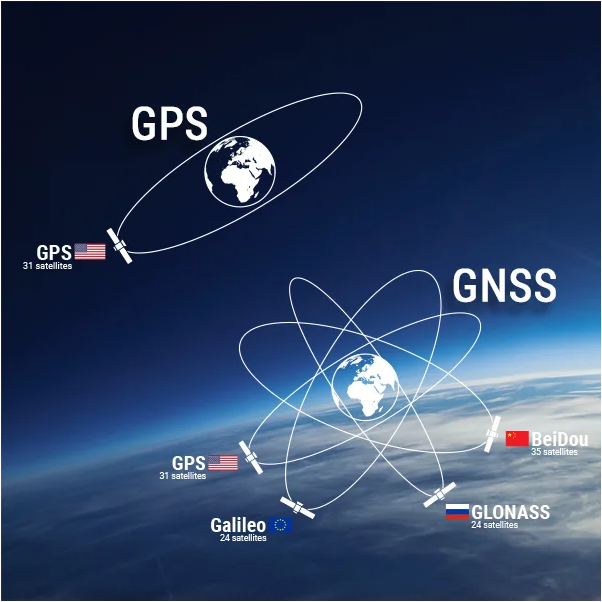
Why is VRTK less accurate?
No Physical Base Station:
VRTK solutions typically do not rely on a dedicated, nearby base station. Instead, they may use satellite-based augmentation or remote CORS stations far from the rover, which can reduce correction precision.
Correction Quality:
Corrections are derived from a network or approximate models rather than localised, real-time base station data.
Internet Latency:
VRTK corrections are often delivered over the internet, introducing slight delays that may affect precision.
Signal Quality:
Depending on the implementation, VRTK may rely on fewer GNSS constellations or less sophisticated error modelling, leading to less precise results.
Applications of VRTK
VRTK is typically used in scenarios where high precision is not critical, but improved GPS accuracy is desirable, such as:
- Basic navigation and fleet tracking
- General agriculture (e.g., low-precision spraying) non-critical surveying tasks
VRTK solutions provide enhanced accuracy compared to uncorrected GPS but cannot match the centimetre-level precision of true RTK systems. If your application demands high-precision positioning, a dedicated RTK setup (with a base station or a reliable CORS network) is the better choice.
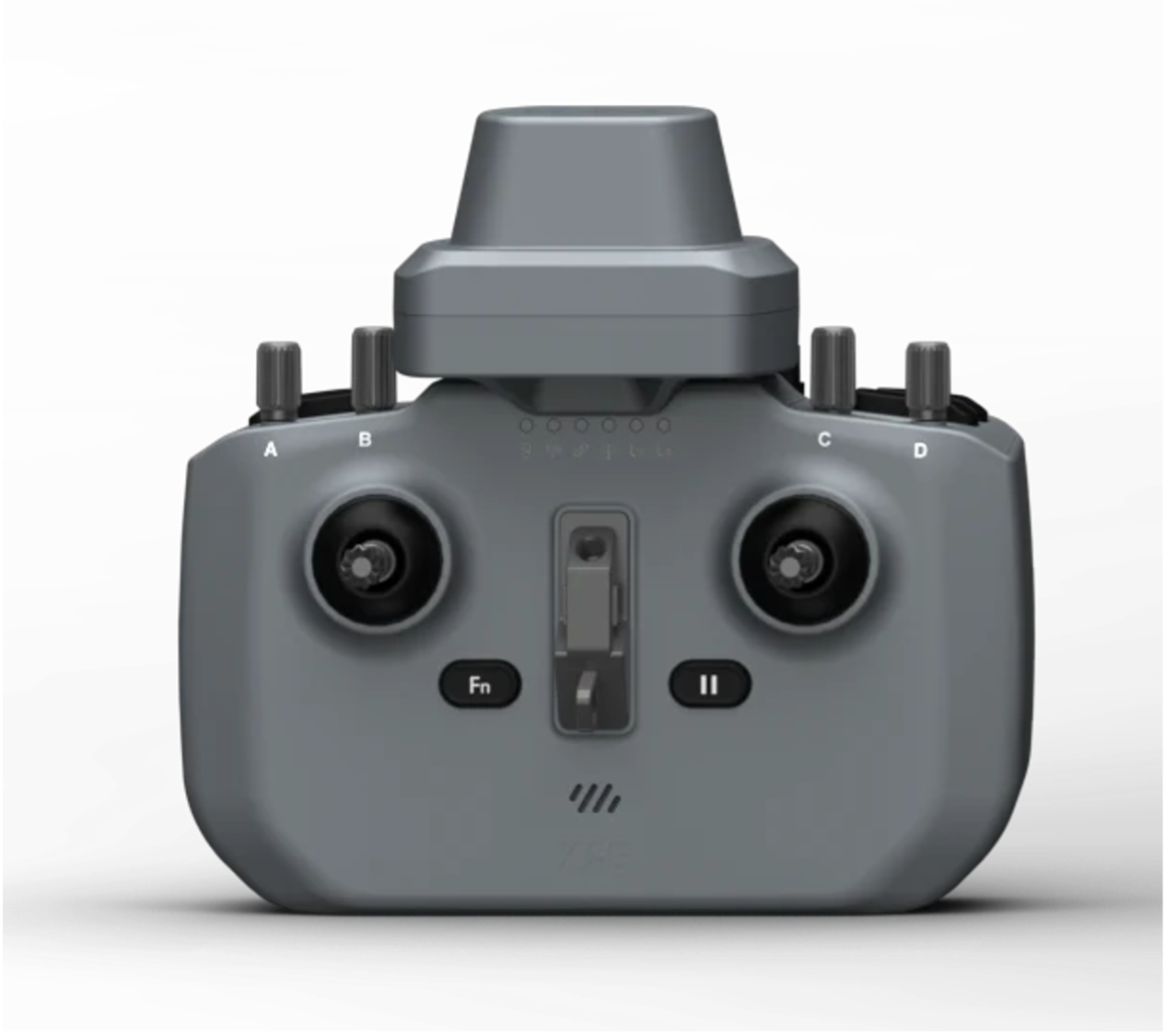
Comparison Table: RTK v CORS Network
| FEATURE | RTK BASE STATION | CORS NETWORK |
|---|---|---|
| Accuracy | Centimetre-level | Centimetre-level |
| Range | Limited to 10-30km | Wide coverage |
| Cost | High initial cost. No fees | Lower initial cost. Recurring fees |
| Setup | Requires setup and maintenance | Plug-and-Play with connectivity |
| Internet Dependence | No/System dependent | Yes |
| Portability | Limited/Tripod | High |
| Best Use Case | Remote areas with poor connectivity | Areas with reliable cellular networks |
Practical Consideration for DJI AGRAS and XAG Ag Drones
DJI AGRAS Drones (China)
DJI AGRAS drones are designed to integrate seamlessly with RTK base stations for high-precision navigation. They also support CORS networks through internet-enabled controllers, offering flexibility based on the user’s operational environment.
XAG Ag Drones (China)
XAG drones are similarly compatible with both RTK and CORS systems. The choice often depends on the scale of operations and the availability of network infrastructure.
Hylio Drones (USA)
Drones are designed to integrate seamlessly with RTK base stations for high-precision navigation. They also support CORS networks through internet-enabled controllers, offering flexibility based on the user’s operational environment.
Conclusion
Both RTK base stations and CORS networks offer robust solutions for precise GNSS positioning. The choice between the two depends on factors like operational scale, location, and budget. By understanding the strengths and limitations of each system, operators of DJI AGRAS and XAG Ag drones can make informed decisions to optimise their agricultural activities.
Recommendations
- RTK Base Station: Suitable for operations in remote areas or when maximum reliability and independence are required. Ideal for smaller fields or stationary use cases.
- CORS Network: Preferred for large-scale or multi-location operations with reliable cellular coverage. Provides flexibility and reduces equipment burden.
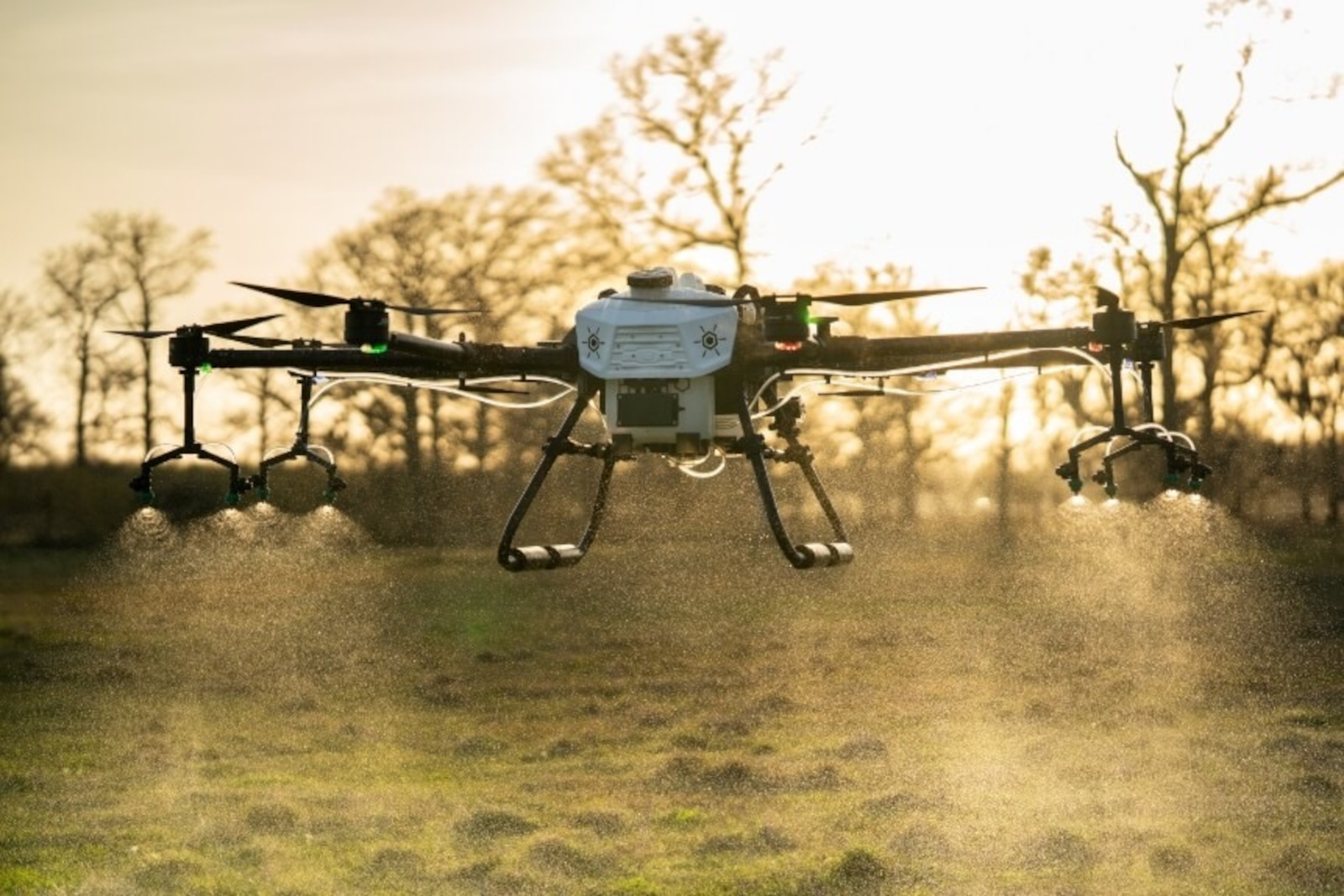
CORS Network Providers
In Australia, several providers offer Continuously Operating Reference Station (CORS) network services, delivering precise GNSS corrections for various applications, including surveying, agriculture, and construction.
Here are some notable CORS network providers:
AllDayRTK Operates a high-density CORS network across Australia, providing accurate Network RTK positioning services for demanding industries and projects
HxGN SmartNet Offers GNSS network real-time and post-processing services throughout Australia, utilizing an extensive national CORS infrastructure
CORSnet-NSW A network of permanent GNSS tracking stations covering New South Wales, delivering centimetre-level real-time positioning for various sectors
AUSCORS Managed by Geoscience Australia, AUSCORS provides open access to GNSS data streams and RINEX data from a network of CORS across the country.
SmartNet Aus Provides GNSS network real-time and post-processing services throughout Australia, generated from an extensive national CORS infrastructure.
These providers support a range of applications requiring precise positioning and are integral to Australia’s geospatial infrastructure.
Let’s Get Started
Don’t trust your future to anyone else. FPV Australia have you covered. Contact us NOW!

